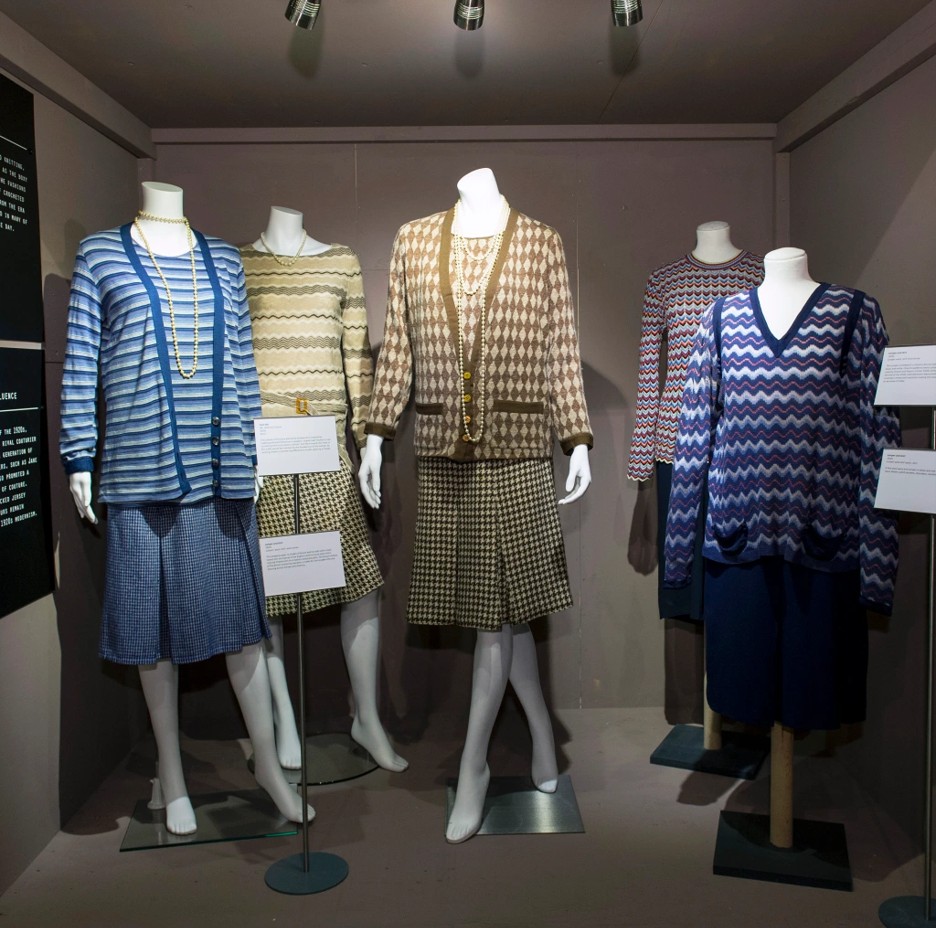Knitwear has come a long way from its humble beginnings as a purely practical garment. Once designed solely for warmth and utility, knitted pieces have risen through the fashion ranks to become symbols of elegance, rebellion, and personal expression. By tracing its journey through the wardrobes of famous figures across decades, we can see how this versatile fabric reflects changing cultural moods and style revolutions.
From Royal Utility to Iconic Elegance
In the early 20th century, knitwear began its ascent with the help of influential royals and socialites. Queen Mary of Teck popularised finely knitted cardigans and shawls as dignified yet comfortable attire, setting a precedent for knitwear’s association with quiet luxury. Soon after, Coco Chanel redefined the knitted jumper, elevating it from seaside leisurewear to high fashion. Her relaxed yet refined designs offered women freedom of movement and a modern silhouette, proving that knits could be as chic as any tailored suit.
Hollywood’s Golden Age of Glamour
The 1930s and ’40s brought a new wave of knitwear appreciation thanks to Hollywood icons. Stars like Greta Garbo and Lauren Bacall embraced figure-hugging sweater dresses and cashmere cardigans, pairing softness with undeniable sophistication. Knitted twinsets became a symbol of ladylike grace, while off-duty celebrities showcased chunky jumpers as a stylish alternative to structured suits.
Rebellion in Stitches: The Mid-Century Shift
By the 1950s and 60s, knitwear took on a rebellious edge. Beat poets, jazz musicians, and rock ’n’ roll pioneers favoured slim turtlenecks and ribbed sweaters that exuded artistic cool. Marilyn Monroe famously posed in slouchy fisherman knits, blending sensuality with comfort. Across the Atlantic, British cultural icons like The Beatles and Jean Shrimpton made the turtleneck a symbol of youthful independence.
Power Knits of the 1980s
The 80s ushered in an era of bold colours and exaggerated shapes. From Princess Diana’s whimsical sheep sweater to the oversized jumpers worn by pop stars like Madonna and George Michael, knitwear became a playground for self-expression. Patterns, textures, and shoulder pads reflected the decade’s appetite for drama and individuality.
Minimalism and Luxury in the 1990s and 2000s
As fashion shifted toward minimalism in the 90s, knitwear adapted again. Supermodels like Kate Moss embraced clean, neutral-toned sweaters that whispered sophistication. Designers experimented with cashmere and fine merino wool, transforming simple jumpers into luxury staples. Knit dresses became a runway favourite, proving that elegance could also be effortlessly comfortable.
Modern Knits: Sustainability and Inclusive Style
Today, knitwear sits at the intersection of heritage and innovation. Celebrities such as Rihanna and Harry Styles wear vibrant, gender-fluid knits that challenge traditional norms, while eco-conscious designers focus on sustainable fibres and ethical production. Modern fashion lovers look for pieces that offer timeless style and lasting quality, making knitwear a smart investment for every wardrobe.
For those seeking contemporary designs that celebrate curves while maintaining high-fashion appeal, Froxx offers knitwear that blends comfort, craftsmanship, and trend-savvy details. Their pieces show how knitwear can be both a nod to history and a leap into the future.
Threads That Tell a Story
The evolution of knitwear mirrors the lives of the people who wore it: from royal refinement to Hollywood glamour, counterculture rebellion to modern sustainability. Each stitch carries a story of innovation and self-expression, proving that knitwear is far more than a seasonal staple. It’s a living, breathing part of fashion history.
Dilawar Mughal is an accomplished author with a passion for storytelling. His works span various genres, from thrilling mysteries to heartfelt romance novels. With a keen eye for detail and a knack for character development, Dilawar weaves engaging narratives that captivate readers and transport them to new worlds.
